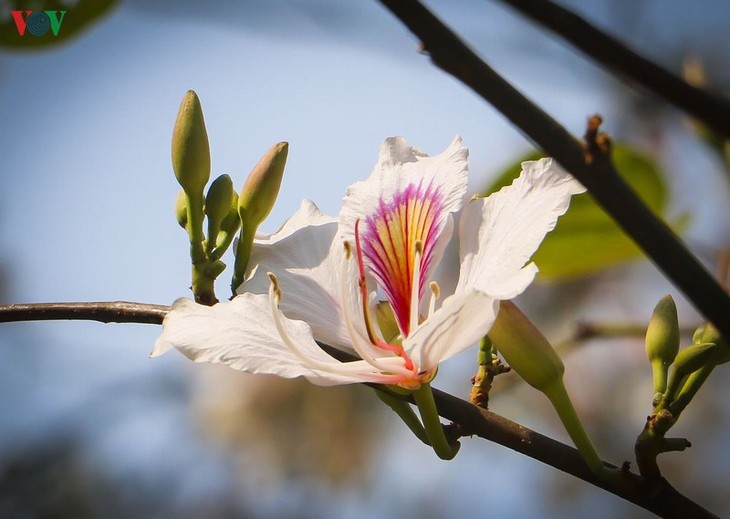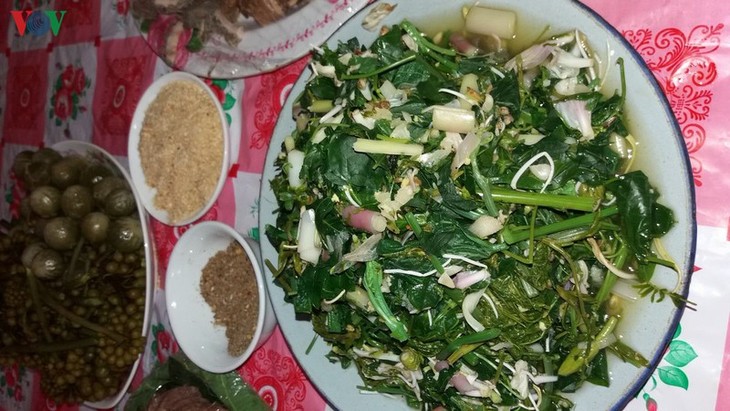(VOVWORLD) - For generations, Ban (Bauhinia) flowers have been associated culturally and spiritually with Thái and Tày ethnic minority groups living in Vietnam’s northwestern mountains. Local people consider Ban, which bloom in March, “the king” of flowers.
In the Thái language, “ban” means “sweet”. A Ban tree is 2 to 6 meters tall and has rough, grey bark and abundant long branches. Ban flowers have soft, sweet fragrance.
In March, when Ban season peaks, mountainsides covered in flowering Ban trees create a romantic picture. The five-petaled flowers can be purple, white, or red, but the majority are white. White Ban flowers often appear in poems to symbolize the charm and beauty of Thái and Tày women.
 A white Ban flower (Photo: Thúy Ngoạn) A white Ban flower (Photo: Thúy Ngoạn) |
Nguyễn Thị Lan, who lives in Lai Châu province, said: “I’ve lived in the northwestern region for 40 years. Ban trees used to grow only in the mountains, but now they decorate our streets. We have festivals all around this region whenever the Ban flowers bloom. The flowers can be used in various dishes.”
There are three myths explaining the origin of Ban flowers, all of which praise the flower as a symbol of pure, faithful love as well as filial piety and gratitude.
 Ban trees decorate streets. (Photo: Thúy Ngoạn) Ban trees decorate streets. (Photo: Thúy Ngoạn) |
Điêu Chính Cẩm, head of the Thái ethnic culture preservation club, said: “Ban flowers are representative of the northwestern region. Their origin is explained in a love story about a girl named Ban and a boy named Khum, as well as in other ancient Thái legends.”
The Thái people have discovered that Ban trees have many benefits. The bark can be used as an indigo dye, the flowers and leaves can cure sore throats, and the seeds and buds can be boiled and eaten. Ban flowers can be eaten, too, and are often mixed into salads with galangal, bamboo shoots, and wild vegetables, or stir-fried with garlic, stewed with trotters, and then boiled and served with “cham cheo” – a local spice made of wild herbs. Dishes made with Ban flowers are eaten as an everyday meal or served at banquets. The flower has become a signature ingredient of the Thái people.
 Ban flower salad (Photo: Thúy Ngoạn) Ban flower salad (Photo: Thúy Ngoạn) |
Lý Hiến Hoa, who once lived overseas, told us: “I thought at first that Ban flowers were just to look at. I didn’t know I could eat them. But it turns out that dishes made with Ban flowers are delicious.”
Ban blossom season is a season of Thái festivals. The Thai use Ban flowers for decoration, food, and offerings to pray for peace, prosperity, and happiness.